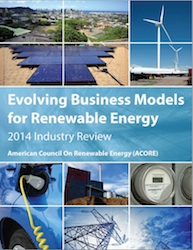Have you ever wondered what it would be like to wake up, walk outside and there were no animals, living things others than humans and nothing was green but all brown? Well this is the world of Jack, growing up in a Southern Appalachian copper mining town. The environment is so bad that the air eats through a pair of pantyhose in a matter of minutes. “A Bird on Water Street” is a young adult (and adult) story about the environmental turn-around of Tennessee town, “Coppertown”.
things others than humans and nothing was green but all brown? Well this is the world of Jack, growing up in a Southern Appalachian copper mining town. The environment is so bad that the air eats through a pair of pantyhose in a matter of minutes. “A Bird on Water Street” is a young adult (and adult) story about the environmental turn-around of Tennessee town, “Coppertown”.
Based on a true story, author Elizabeth O. Dulemba explores the relationship between the environmental devastation due to copper mining and how the efforts of one boy, Jake, can turn a city around and make a difference.
Bird on Water Street explores several key environment and advocacy issues including:
- Issues around copper mining and the devastating effects it has on the local environment.
- How taking small actions to better our surroundings can make a big difference.
- The challenges that many young people face, including bullying, death, pregnancy, and drugs and how they can navigate the issues.
- Why having a sense of community is so important, especially for the growth and development of the community’s youngest members.
It’s hard to imagine living in a world with a “dead” environment, wide-spread disease, death and other health issues, but through the voice of Jack, you not only imagine it, you are both sad for him, his friends and his town. And you can’t help but cheer for him when he begins to discover elements of the environment that he realizes he is missing and he takes small steps to make change: growing a garden and planting a tree. Eventually, the whole town, after a strike and the closing of the mine, bands together on reclamation efforts and a new town is “reborn”.
I enjoyed the book and the authenticity of the voices of Jack and his friends and families. For parents who are looking for ways to encourage their children to become an active player in environmental efforts or young adults looking for inspiration and ideas, this is a great book to begin that journey.









